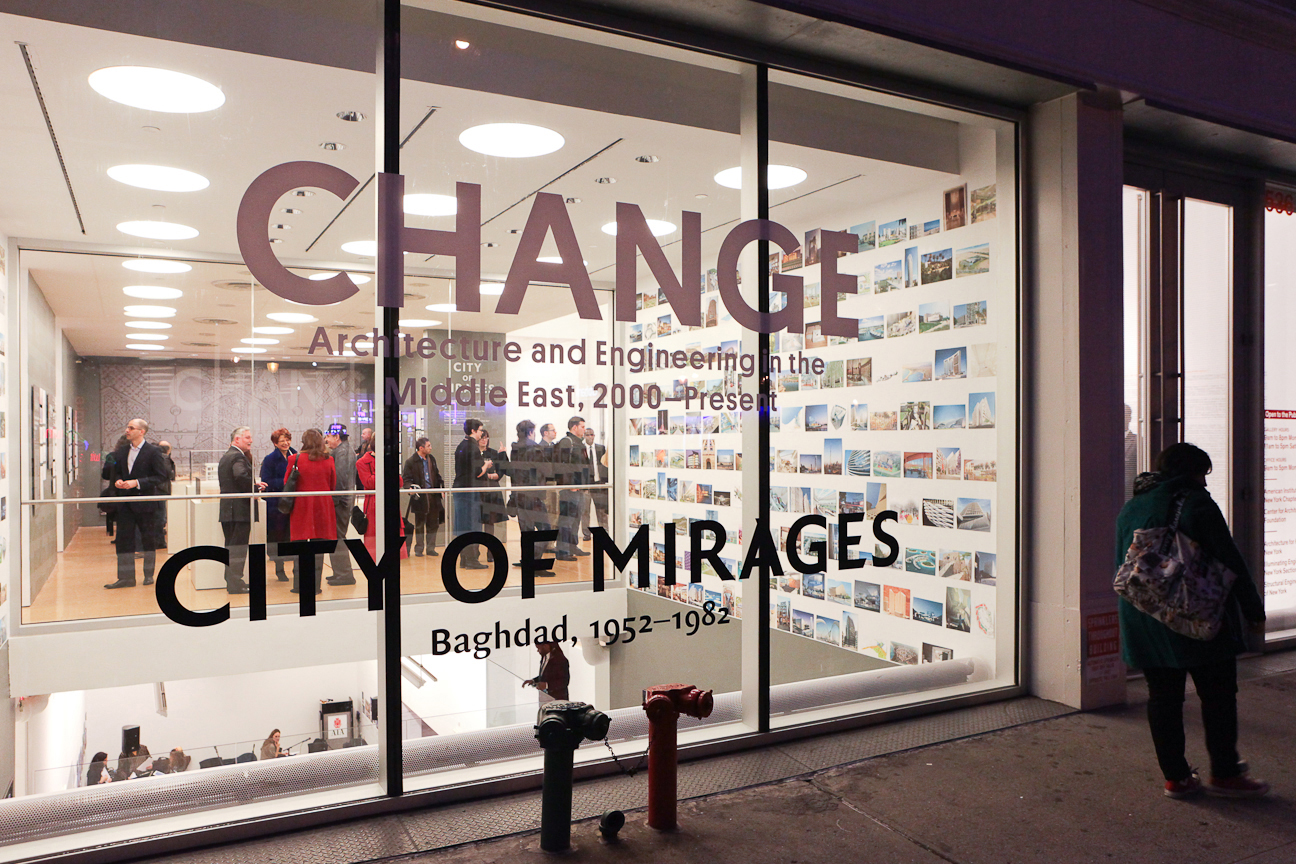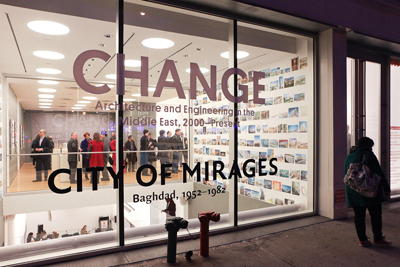by Benedict Clouette

Opening at the Center for Architecture for “CHANGE: Architecture and Engineering in the Middle East, 2000-present” and “City of Mirages: Baghdad, 1952-1982”
Sam Lahoz
Event: Opening for “CHANGE: Architecture and Engineering in the Middle East, 2000-present” and “City of Mirages: Baghdad, 1952-1982”
Location: Center for Architecture, 02.22.12
Speakers: AIANY President Joesph J. Aliotta, AIA; AIANY Executive Director Rick Bell, FAIA; Pedro Azara, curator of City of Mirages: Baghdad, 1952-1982; Malwina Łyś-Dobradin, Director for Global Network Programming, Columbia University GSAPP; Craig Konyk, AIA, Principal, KONYK; Adjunct Assistant Professor of Architecture, GSAPP
Performance by: Heather Raffo and Salaam
Organizer: Center for Architecture
Benefactor: A Estéban & Company
Lead Sponsor: Buro Happold
Sponsors: Eytan Kaufman Design and Development; FXFOWLE
Supporters: Arup; Columbia University, Graduate School of Architecture, Planning and Preservation; Dewan Architects & Engineers; GAD; HDR; Kohn Pedersen Fox Associates; NAGA Architects; Ramla Benaissa Architects; RBSD Architects; Skidmore, Owings & Merrill; World Monuments Fund; Zardman
The Center for Architecture welcomed more than 500 guests for the opening of two exhibitions on architecture in the Middle East. The exhibitions—“CHANGE: Architecture and Engineering in the Middle East” and “City of Mirages: Baghdad, 1952-1982”—present a variety of work in the region, both historical and contemporary.
“City of Mirages” offers a survey of projects for Baghdad, both built and unbuilt, from the city’s golden era following the discovery of oil in 1952 and prior to the Iran-Iraq War. Baghdad in these years was a cosmopolitan city in the midst of rapid modernization, a boom town that drew the most prestigious international architects of the day. The exhibition features models and drawings of buildings by Frank Lloyd Wright, Alvar Aalto, José Luis Sert, Gio Ponti, Willem Dudok, and Alison and Peter Smithson, among others. Notable surprises include Le Corbusier’s partially realized Saddam Hussein Sports Complex, and a mass housing project by Venturi, Rauch and Scott Brown that was constructed without the firm’s knowledge. Built work includes large scale urban projects for the campus of the University of Baghdad by Gropius and The Architects’ Collaborative and the public housing designs by Constantinos Doxiadis that later became the infamous Sadr City. These projects are visible in a six-foot wide site model built by students at the University of Baghdad.
The second exhibition, “CHANGE,” presents a snapshot of contemporary architectural design in the region. The work in the show was submitted in response to an open call by the Center, and includes projects by AIANY members, AIA members across the United States, and architects and engineers practicing in the Middle East. “CHANGE” forms a fitting counterpart to “City of Mirages,” documenting a moment of accelerated transformation marked by ambitious urban projects and a convergence of international architecture and engineering offices, not unlike the earlier era in Baghdad.
The evening closed with musical performances by the group Salaam and Heather Raffo, an Iraqi-American actress and playwright.

